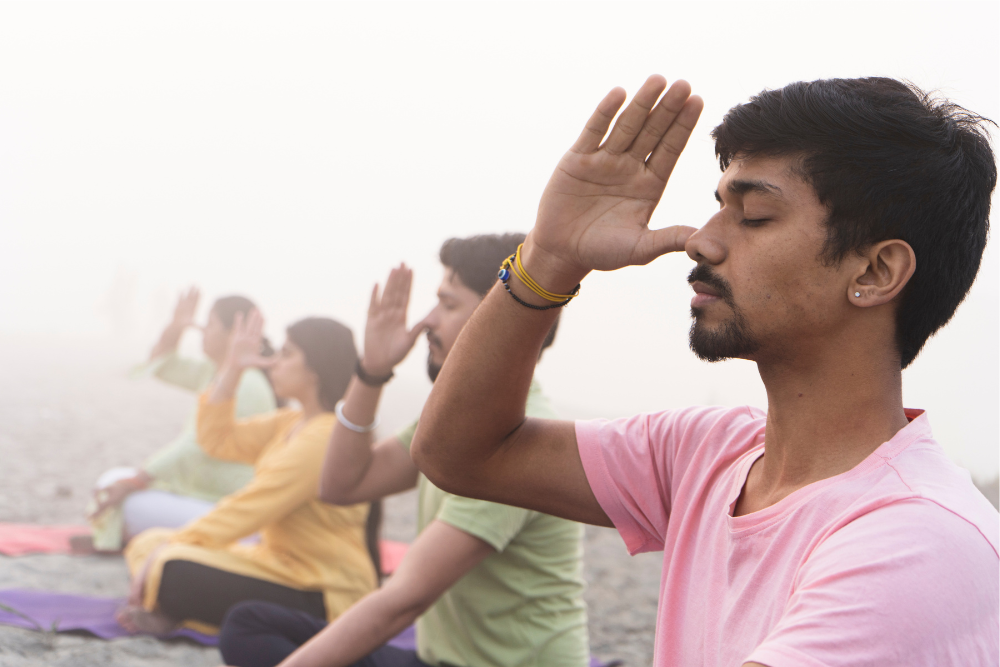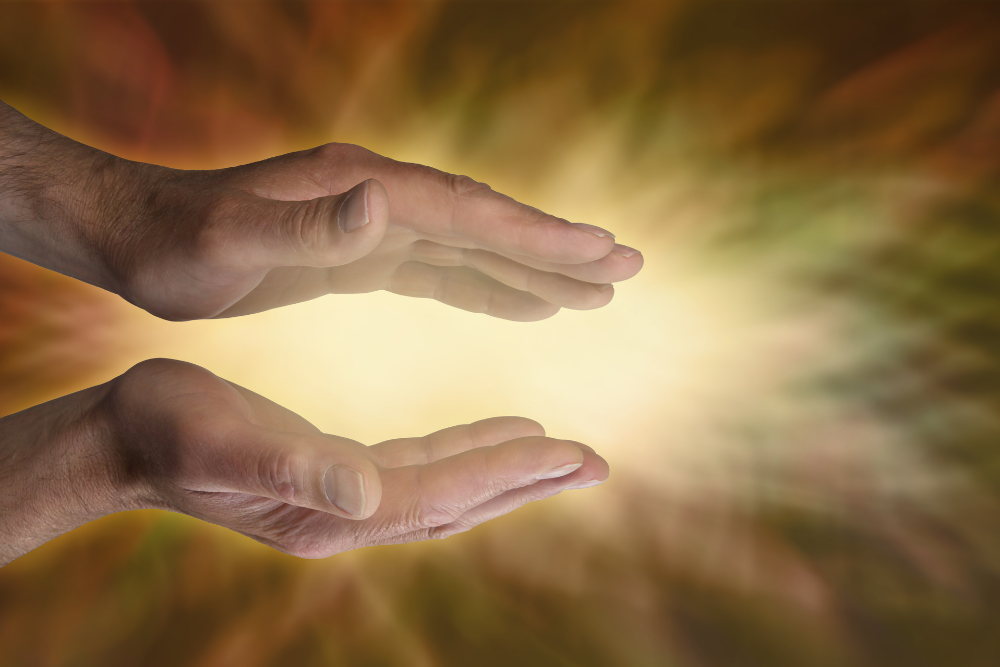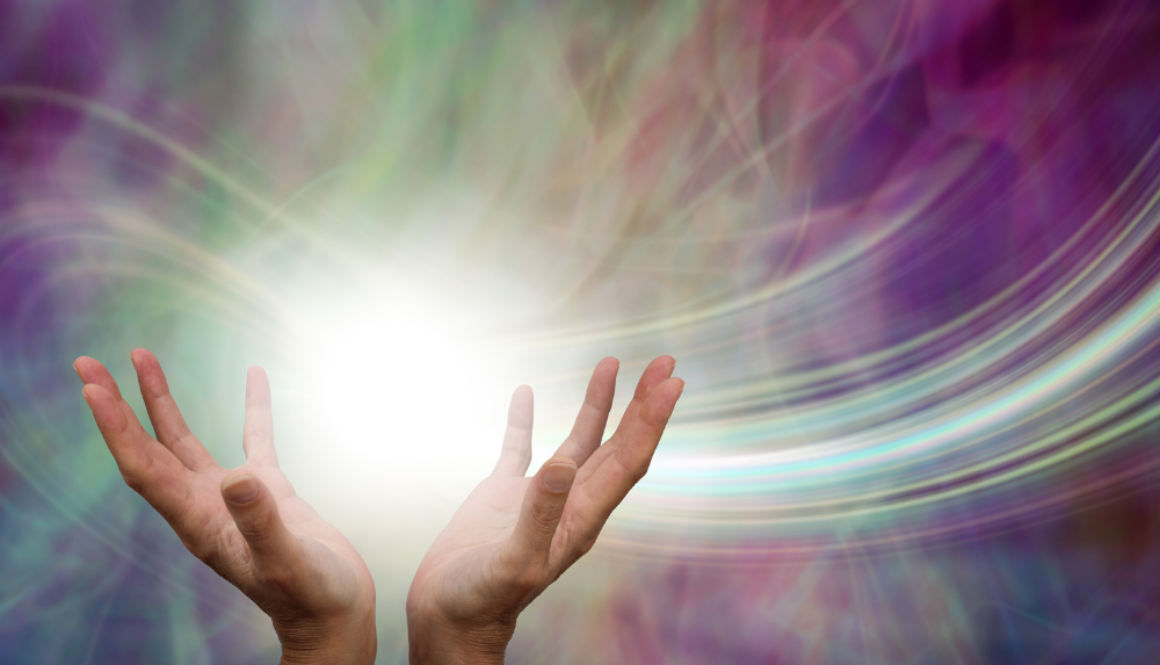The Role Of Energy In Healing And Well-being
When I use the term ‘energy’ in the context of health, I am not referring to the energy we measure in calories or the power that lights our homes. Here, it is more elusive, yet many cultures believe in the role of energy in healing and well-being. It’s a concept that has been recognized for centuries, having deep roots in traditional healing practices worldwide.
Historical perspectives offer a fascinating window into how we perceive energy as a cornerstone of healing. Take, for example, the traditional Chinese concept of ‘Qi’, the vital life force, or the Indian ‘Prana’, a breath or energy that moves through and sustains our bodies. Both show the universal nature of the idea that health is more than the absence of disease; it’s also the presence of a particular vital force.

Modern medicine still grapples with this concept, though it often takes a backseat to more tangible, scientifically measurable aspects of health. However, researchers and practitioners are increasingly paying attention to the influence ‘energy’ has on healing and well-being in its broadest sense. Investigations into fields like bioenergetics highlight an intersection between the longstanding traditions and cutting-edge science.
So, why is understanding energy important for you? I believe acknowledging the role of energy forms the basis for addressing health holistically. We can unlock new pathways to healing by realizing our bodies and minds’ profound interconnection through various forms of energy. As you move into the next section, you’ll gain insights into bioenergetics and why this may be the key to surviving and thriving.
Exploring Bioenergetics: The Body’s Energy Field
Bioenergetics studies the flow and exchange of energy within living systems. It’s a field that bridges traditional biology with energy-focused practices, suggesting that our bodies are not just systems of chemical and mechanical processes but also energy fields. This view posits that disturbances in our energy field can affect our physical and mental health.
Scientists and practitioners often use tools and techniques such as bioelectromagnetic-based therapies, electrodermal testing, and thermal imaging to measure and visualize the human energy field. These methods not only help in diagnosing ailments but also guide healing interventions. Bioenergetics involves various forms of treatment, ranging from acupuncture and Reiki to more modern techniques like pulsed electromagnetic field therapy.

Research provides compelling cases showcasing the success of bioenergetics in promoting healing. Studies have documented significant improvements in patients with chronic pain, fatigue, and other conditions following energy-based therapies. This concrete evidence supports the concept that our energy field can be a valuable indicator of our overall health and a target for treatment.
The Significance of Mindful Energy Practices
When I talk about mindful energy practices, I’m referring to the deliberate focus on our inner experience as a pathway to understanding and influencing our energy. Scientific evidence confirms what many cultures have long known: a profound connection between the mind and body. This connection plays a pivotal role in how energized we feel.
You may wonder how mindfulness can tangibly influence our well-being. Meditation, tai chi, and yoga do more than calm the mind; they directly impact our energy levels. These practices encourage relaxation that helps the nervous system shift from stress-driven patterns to the rest-and-digest mode, often leading to improved energy regulation.
Introducing daily mindfulness sessions might seem challenging, but it doesn’t require hours of your day. Even short bursts of mindful breathing or conscious movement can forge a path to a more centred and energetic self. You’ll notice that with regular application, your resilience to stress improves, and you can maintain a more constant energy level throughout the day.
Nutrition and Energy: Fueling the Body for Optimal Healing
The interplay between diet and our body’s energy is like a finely tuned machine: If we pour in the right fuel, the machine runs smoothly; if we don’t, the system starts to falter. In the context of well-being, what we eat is pivotal in determining how energetically equipped our body is to repair and revitalize itself.
We can think of every morsel of food we consume as a packet of energy. These packets come in different forms, classified by calories and nutritional content, which our body converts into the energy it needs to perform various functions. The body’s energy currency is adenosine triphosphate (ATP), produced through the metabolism of carbohydrates, fats, and proteins obtained from our diet.
To create an optimal environment for healing, focus on a balanced diet that is abundant in essential vitamins, minerals, and other nutrients. Vitamin C, zinc, and protein support the immune system and facilitate healing.

Maintaining blood sugar levels through regular intake of complex carbohydrates can lead to sustained energy levels throughout the day. Similarly, incorporating healthy fats, such as those from avocados and nuts, can support cellular health and, hence, the body’s inherent healing mechanisms.
Hydration has a vital role in maintaining energy balance. Water is necessary for nearly every bodily function. It serves as the medium for transporting nutrients to where they’re needed and removing waste products from the body. We can prime the body for healing and maintaining energy levels by the simple yet effective step of ensuring an adequate intake of water.
As we shift our attention to physical activity in the next section, it’s essential to recognize that our food choices lay the groundwork for the energy we have available for exercise. A well-nourished body is more capable of engaging in physical activity that supports overall health and contributes to a resilient energy system.
Physical Activity: Energizing the Body and Mind
When discussing the interplay between physical activity and energy, I’m not referring to the boost you feel after coffee. I’m talking about energy at the cellular level, where the mitochondria work. These tiny powerhouses in your cells convert nutrients and oxygen into ATP, the body’s primary energy currency. Regular physical activity ramps up this process, improving your body’s efficiency at producing energy and its capacity to heal.
I’ll cut to the chase: different types of exercise serve different energy needs. For example, cardio workouts get your heart pumping, increasing circulation and driving up energy production. On the other hand, strength training primarily breaks down muscle fibres, which rebuild stronger during recovery. This process increases your body’s energy demand and, over time, its energy capacity.

But this isn’t about pushing yourself to the brink. It’s critical to find a balance between activity and rest. Overexerting yourself may lead to injury or burnout, which won’t affect your energy levels. Integrating rest days and getting adequate sleep are essential for your body to repair and build energy reserves. After all, sustainable well-being relies on recognizing when to move and when to rest.
When we touch on emotional well-being in section six, we realize that physical and emotional energies are intertwined. For instance, have you ever felt mentally drained after a long day of physical work or vice versa? Be aware your emotional state can influence your physical energy levels. As I transition to discussing emotional energy, remember that managing your physical activity isn’t just about enhancing your physical strength or endurance; it’s also an investment in your overall emotional balance.
Conclusion: Integrating Energy in Healing And Well-being
I’ve shared insights on the intricate relationship between energy and well-being in this discussion. Energy is not just a buzzword; it’s a tangible factor in your holistic health journey.
You now understand that it’s not only about what you do but how you feel and think that influences your energy levels. Every meal, every mindful moment, and every move you make can either contribute to or deplete your energy reserves.
Remember, maintaining and harnessing your energy isn’t a sporadic event. It requires consistency and commitment. Start small. Choose one practice to integrate into your daily life—tweaking your diet, adopting a mindfulness practice, or adjusting your physical activity.
Observe the changes in your feelings, sleep quality, and stress levels. Use this feedback to tweak your choices, moving towards activities that boost your energy and away from those that drain it.
Health is a dynamic balance. It’s about finding your unique rhythm—a personal harmony of nutrition, physical activity, and emotional well-being that optimizes your energy for life’s challenges and joys.
Keep learning about your body’s signals and the science of well-being to empower your choices. Each step can move you closer to a more vibrant, energetic self. Energy consciousness isn’t just a part of the healing; it’s a cornerstone of sustained well-being.
Resources:
Whole-Body Wellness: The Harmonious Blend of Nutrition and Chiropractic Care | Derryberry Chiropractic.
Energy & Consciousness

